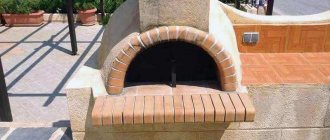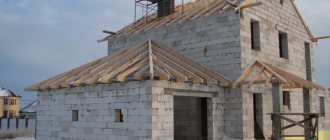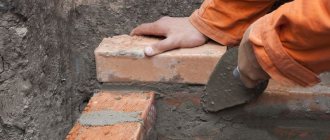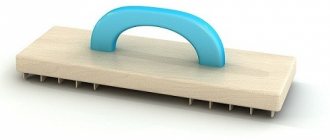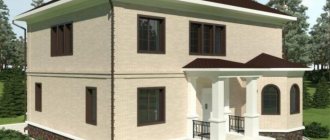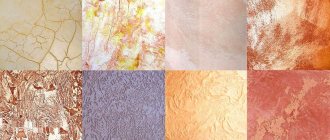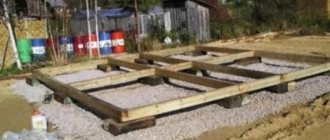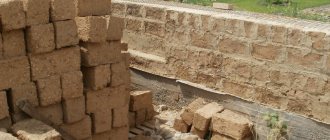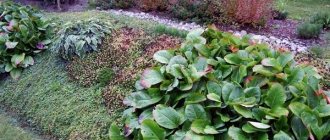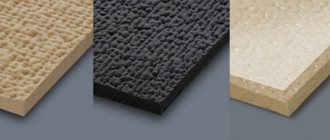If you are interested in the issue of maximizing the cost of building materials, then you can think about how to make a machine for cinder blocks with your own hands. This can only be done using a vibration machine. Of course, you can purchase such equipment, but it is quite expensive, and it will only be justified if you want to put product molding into production. That is why experts advise making the matrix yourself, but you can read about the rules for carrying out this work below.
You can easily make a machine for making cinder blocks with your own hands. Cinder blocks act as the most affordable and simple stone material for building walls. It was invented more than 100 years ago, the combination of characteristics of this insulating and structural material makes it indispensable today. The development of mass private construction, which especially concerns farms and subsidiary plots, requires a constant reduction in the costs of constructing non-residential premises.
Today, almost everything that comes to hand is used to build storerooms, sheds and barns. If you want to do the work using high-quality products, then you can make a cinder block machine yourself.
Work technology
You must understand the point that the final product made using a homemade machine will not have such high durability and strength as factory-made blocks. This is due to the fact that home production cannot allow it to withstand all the rules and features of the technology, because you will not have the opportunity to use the steaming stage, which saturates the material with the necessary moisture. However, self-made blocks can be used to build lightweight one-story houses. Their service life will be 30 years.
If you decide to make a machine for cinder blocks, then keep in mind that the main part of such equipment will be a form for the raw mixture, or a matrix. These parts are a steel box in which elements in the form of voids are installed. A die is a machine that can be used to perform a specific step of operations manually.
Preparatory stage
Materials for production
The use of aerated concrete blocks in construction has many advantages.
Let's list the main ones:
- one 30-kilogram block can replace about 30 bricks at the same time, which affects the construction time of the building;
- the low weight of porous concrete allows the construction of private housing without the use of cranes and other special equipment;
- Autoclave gas blocks can be easily processed using ordinary metalworking tools.
The simplicity of the production process makes it possible to produce the required amount of this building stone directly on the construction site or next to it.
All you need is instructions describing the entire process and raw materials:
- water;
- cement;
- lime;
- quartz sand.
Note! To obtain the porous structure of aerated concrete, a suspension of aluminum powder is used. This is an active substance that can cause harm to human health. Remember to use safety equipment.
Devices and mechanisms
Not so long ago, the complexity of technology did not allow the production of various concrete blocks at home, without the use of specialized production lines. Currently, the situation has changed dramatically. There is equipment for: for the production of aerated concrete blocks, for cinder blocks, for bricks and so on.
In the case when aerated concrete is produced not for one’s own needs, but for the purpose of subsequent sale, it makes sense to pay attention to other equipment:
- semi-automatic production lines producing 2-4 cubic meters of finished products per day - good for individual businesses or medium-sized enterprises;
- automatic production complexes that allow the production of up to 100 cubic meters of aerated concrete blocks in 24 hours - suitable for a large enterprise engaged in the production of building materials.
Preparation of materials and tools
In order to make a machine for cinder blocks, you should stock up on a grinder, metalworking tools, a welding machine and a vice. You will also need a 3 mm steel sheet, the size of which will be 1 square meter. Prepare a 3mm strip, the width of which is 0.3 meters. Nuts and bolts will serve as additional components. Be sure to stock up on a pipe, the diameter of which can vary from 75 to 90 millimeters. Its length should be one meter. You will need an electric motor, the power of which can vary from 500 to 750 watts.
Properties of finished products
The aerated concrete obtained by the method described above has the following properties:
- low density (comparable to the density of solid pine) - it is 5 times less than that of monolithic concrete and 3 times less than that of brick;
- compressive strength, which allows the construction of 2 and 3 storey buildings from aerated concrete;
- moisture absorption, which does not exceed 20%, which is comparable to the same brick;
- frost resistance 2 times greater than that of brick;
- high thermal conductivity - 2 times less than that of pine, 15 times less than that of concrete;
- excellent sound insulation properties - with a wall thickness of 300 mm, it completely insulates sound with a power of 60 dB;
- withstands exposure to an open flame at a temperature of 900 degrees Celsius for 4 hours;
- aerated concrete can be easily cut with a regular hacksaw;
- the costs of its purchase or production are lower than those of similar materials.
Work order
If you decide to make a cinder block machine on your own, you will have to follow the technology. At the first stage, it provides for the need to determine the dimensions of a standard cinder block. The master must take into account the required dimensions of the future product. The side parts of the matrix are cut out of the sheet, and you need to expect that for 2 blocks you will need a structure that will be equipped with a partition in the center. Thus, you should end up with a kind of box in which there will be two compartments. The voids must provide this wall, the thickness of which is at least 30 millimeters. Taking this into account, you need to determine the height of the parallelepiped or cylinder. This will limit the voids.
Types of machines
block making device
Machines for cinder blocks can vary in design complexity:
- Collapsible structure made of wood or metal. It is very easy to make it yourself, and choose the sizes that will be convenient to work with later. It can have different sizes, depending on how many blocks will be produced at the same time. The easiest way would be to make forms from wood, in the longitudinal walls of which it is necessary to cut grooves for inserting partitions. Champagne bottles or water-filled plastic bottles are used to produce voids. Vibrocompression is not used in this option.
- A vibrating machine that produces higher quality, more durable products with more correct geometry. It consists of a form mounted on a table or a special stand. The vibrating machine also includes an electric motor. Using such a device, you can produce solid or hollow blocks in a fairly large quantity in a short time. The vibrating machine can be equipped with a lifting device that allows the blocks to be removed from the mold.
We invite you to familiarize yourself with Floor joists - the distance between floor joists made of boards
The type of machine should be selected based on the intended purposes. Let’s say that for the production of blocks for the construction of a garage or bathhouse, the simplest option is sufficient, but for mass production, the use of an electric brick making press becomes mandatory. The latter option is more preferable, since the material is additionally exposed to vibration, which increases the strength of the cinder block due to additional compaction.
Equipment manufacturing method
If you decide to make your own cinder block machine with your own hands, the drawings of which must be prepared in advance, you need to cut 6 pieces of pipe. Their length should equal the height of the cylinder.
In order to give the cylinders a cone shape, it is necessary to cut each element lengthwise to the central part, and then compress it with a vice, connecting it using a welding machine. This will reduce the diameter by 3 millimeters. The cylinders are welded on both sides. They will need to be connected to each other in the form of a row along the long side of the future product. It is necessary to make cuts in the center of each of the compartments of the matrix being manufactured, and then strengthen the eyes on the reverse side. This is required to temporarily fix the void limiters, which will make it possible to manufacture blocks.
Production of cinder blocks on a vibrating machine
The production technology for both a self-made and purchased mini-installation is identical:
- the production cycle begins with mixing the solution in a concrete mixer;
- the resulting mixture is poured into the mold and leveled using a trowel;
- the vibrator is turned on and the solution is kept in the mold for 20 to 60 seconds;
- the device is turned off, the installation is raised, and the finished cinder block is released.
When leveling the solution, special attention is paid to the corners, which must be carefully filled. Otherwise, the geometry of the final product may suffer.
Expert advice
When making a cinder block machine with your own hands, the drawings should definitely be reviewed before work begins. On one of the cross walls you need to weld 4 bolts for the mounting holes. The blades and apron are welded along the edges. All parts are polished and cleaned before applying paint.
At the next stage, the master makes a mold. This element is a plate with holes, the diameter of the latter should be approximately 5 millimeters larger than the cylinder. It is important to make the plate so that it can freely sink to a depth of 70 millimeters into the box where the limiters will be located.
Handles are attached to the press, which will be convenient to use during operation of the equipment. At the next stage, the entire structure is painted, and then a vibration motor is installed.
Vibrator for machine
Any electric motor with an eccentric mounted on its axis can be used as a vibrator for a machine. This could be a metal plate with a displaced center of gravity or some kind of load. To shift the axis, it is enough to drill a couple of holes in the plate. Without an eccentric, creating vibration will be impossible. The vibrator must be rigidly attached to the machine. You can make a vibrator with your own hands from the engine of a washing machine or vacuum cleaner.
If you couldn’t find suitable used motors, you can buy an electric tabletop sander with two sanding discs in the store. Instead of sharpening discs, you need to install eccentrics offset to one side. Since this device already has convenient fasteners for installation on the machine, its use is more preferable.
We invite you to familiarize yourself with the DIY sauna heater stove
Block material
After the machine for making cinder blocks is ready, you can think about what will form the basis of the products. Theoretically, they can be made from anything; expanded clay concrete, clay, and sawdust concrete are suitable. The most suitable mixture composition is 1 part sand, 3 parts granulated slag and 1 part cement.
The decisive point when carrying out this work will be the ratio of water in the mixture. No matter how good the machine for making cinder blocks is, if the mixture is prepared incorrectly, the products will turn out to be of poor quality. The water content can be easily determined by eye. The mixture should hold its shape without crumbling. The raw materials are placed in a matrix to form blocks during the pressing process. When making a machine, instead of voids, you can use broken bricks, sharp-angled stones or glass bottles.
Video
There is no shortage of materials for construction - today you can buy everything. The prices, however, are such that any construction costs a pretty penny, so making building materials yourself is not a whim, but a necessity. In recent years, brick has had serious competitors: blocks made of gas silicate and foam concrete, porous ceramics, expanded clay, and polystyrene. All these materials are made on production equipment, but one type of wall stone can be made at home - cinder block. We will tell you how to make a machine for making cinder blocks with your own hands.
Cinder block is an artificial stone of a rectangular shape and strictly defined dimensions. The type and size of the cinder block depend on the purpose. Most often, this is a block with technological voids (about 30% of the volume), providing relatively low weight and reducing the thermal conductivity of the material.
Depending on the purpose, cinder block can be:
- hollow or monolithic;
- whole or half;
- private or facial;
- load-bearing or partition.
Decorative (front) cinder block can be of different colors; the surface on the front side can be chipped, torn, corrugated, or polished. The material is usually used for the construction of decorative fences.
Several basic block sizes and weights:
- ordinary standard 390x190x188 mm, weight 20 – 28 kg;
- ordinary half 390x120x188 or 390x90x188 mm; weight 10 -14 kg;
- partition 390Х120Х188 mm, weight 10 -15 kg.
Materials for the production of cinder block
The cinder block contains binder, filler and water. The block's name comes from blast furnace slag, which was once abundant and used as filler. Today, slag is rare, and the following is used as a filler for cinder blocks:
- granite screening;
- brick chips;
- fine crushed stone;
- river gravel;
- sand;
- crushed expanded clay;
- clay;
- wood sawdust.
The binder is cement grades 300 - 600. The grade of cement depends on the required strength of the block - the higher the grade, the denser the stone.
Characteristics of cinder block. Advantages of industrial production
There is no strictly defined recipe for making cinder block, so its characteristics are not constant. Depending on the filler, the cinder block has:
- Density (750-1,450 kg/cm3).
- Strength M30 – M150.
- The void ratio is on average 0.3, not more than 0.4.
- Thermal conductivity coefficient 0.27 – 0.65 W/m2
- Service life (depending on climatic conditions) 30 – 150 years.
The main difference between the industrial production of cinder blocks is the processing of the formed stone in a steaming chamber. Within a day, at a temperature of 80–100 o C and humidity up to 100%, the material gains up to 70% of its maximum strength and can be immediately used in construction. The strength characteristics of a factory-made cinder block are approximately twice as high as those of a home-made cinder block. But the material made on a cinder block machine with your own hands is much cheaper and is also quite suitable for construction.
How to make cinder block at home
The principle of cinder block production is simple - it is pouring concrete mixture into the formwork:
- To prepare the working mixture, mix cement, fillers and water. Fillers are pre-screened to remove large and foreign fragments. The volume of water should not be too large so that the mixture has a semi-dry consistency (in professional slang - “prance”). An example of a typical proportion for a high-strength cinder block: filler - 7 parts, coarse sand - 2 parts, medium-fraction gravel or granite screenings - 2 parts, one and a half parts cement, and 3 water.
- The mold (matrix) is loaded with the working mixture and compacted as much as possible by vibrocompression or stuffing. After compaction, the mixture is added to the required volume and re-compacted.
- The formed block is carefully released from the mold.
- Dry the cinder block in natural conditions. After 24 hours, the blocks can be carefully moved from the molding site to the storage site; after 5–7 days, the blocks will be ready for use in construction. The use of a plasticizer allows for faster hardening - after 6–8 hours the cinder block can be moved to a warehouse. The blocks acquire maximum strength after a month; the preferred conditions are high temperature and humidity.
How to prepare the solution?
There is no universal solution composition for making cinder blocks - each master has his own unique recipe. In general, you need to focus on the characteristics of the slag composition.
| Components | Volume, l, per block | Compressive strength of the dried block, kg/cm2 | Frost resistance of the finished block, cycles | Thermal conductivity coefficient of the finished cinder block |
| Slag up to 8 mm | 10 | 30-40 | 30 | 0.35-0,4 |
| Sand up to 3 mm | 1,8 | |||
| Cement | 2,75 | |||
| Water | 1,5 |
There is a standard “factory” recipe, you can use it as a guide. The proportions are as follows:
- slag – 7 parts;
- sand – 2 parts;
- cement - 1.5 parts;
- water – 1.5-3 parts. More details about determining the required amount of water will be discussed below.
Helpful advice! Previously, standard dimensions of slag concrete blocks were given. However, for private buildings it is more convenient to use products with dimensions of 400x200x200 mm.
In addition to slag, the composition of such blocks can include ash, sawdust, gypsum, broken bricks, coal combustion products, gravel and other similar materials.
Pay special attention to determining the required volume of water. It must be added so much so that the products do not spread after formation.
You can do a simple test. Drop a handful of solution onto the ground or other surface. If it crumbled, but when squeezed back with your hands, it came back together into a single mass - the consistency is optimal.
